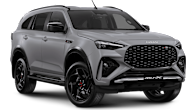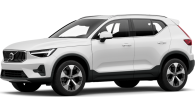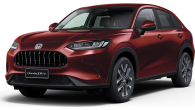Only other parents will understand the concept of time in the loo counting as some time to yourself. And as if being parents to three or more children isn’t tricky enough, finding a vehicle that’ll fit them all comfortably and safely, along with all their stuff, can feel downright impossible.
Do you go for an SUV? A people mover van? Or should you just face facts and buy a bus? That’s where this comparison review will help.
Like me, family reviewer Nedahl Stelio is a parent, and in this review we compared the diesel version of Hyundai Palisade, in the range-topping Highlander grade, with the petrol variant of the Kia Carnival, in the poshest Platinum grade, with the diesel-only Mercedes-Benz Valente.
Now, the Palisade is an SUV, the Carnival is a people mover, and the Valente is more of a minibus based on a commercial van. All of them are 8 seater cars, but the one which came out on top as the best family car might surprise you.
Price and specs
This could well be the only comparison review you’ll find where a Mercedes-Benz costs less than a Hyundai. Quite a lot less.
The Hyundai Palisade is an 8 seater SUV and in the Highlander grade with the diesel engine as tested it lists for $75,000. The diesel-only Mercedes-Benz Valente is $65,800, and the petrol-powered Kia Carnival Platinum $64,680.
The Carnival is by far the best value-for-money. Not only is it more than $10K less than the Palisade, it comes close to matching it feature-for-feature, in some cases out-doing the SUV.
The Carnival and Palisade are impressively equipped with wireless charging, built in sat nav, three-zone climate control, a proximity key with push-button start, adaptive cruise, and LED headlights.
The Carnival’s 12.3-inch display out does the Palisade’s 10.25-inch screen, although the Kia doesn’t have the big Hyundai’s leather interior. The Carnival's trim may look and feel like leather, but is actually synthetic, which is arguably a benefit.
Coming from the same parent company, the Carnival and Palisade share some equipment and materials, highlighting just how much better value the Kia is compared to its Hyundai cousin.
The Mercedes-Benz Valente cannot keep up with the Carnival and Palisade, with its tiny 7.0-inch screen and simple air-conditioning.
Our test Valente featured optional LED headlights, but the standard ones are halogen. Sat nav is also an option, as is the window tinting and adaptive cruise.
Apple CarPlay and Android Auto are standard on the Valente, the Carnival and Palisade, and you'll need to plug in with a cord to use it in all three cars.
There’s a table below which lists more of the standard features for all three cars.
| Hyundai Palisade Highlander | Kia Carnival Platinum | Mercedes-Benz Valente | |
| Price (MSRP) | $75,000 | $67,990 (DA) | $65,800 |
| Multimedia screen | 10.25-inch | 12.3-inch, touch | 7.0-inch |
| Digital instruments | Partial | No | No |
| Head up display | Yes | No | No |
| Apple CarPlay/Android Auto | Yes, wired | Yes, wired | Yes, wired |
| Wireless phone charging | Yes | Yes | Yes |
| Bult-in sat-nav | Yes | Yes | Yes |
| Keyless entry and push-start | Yes | Yes | No |
| Headlights | LED | LED | Halogen |
| Wheel size | 20-inch alloy | 19-inch alloy | 17-inch alloy |
| Cruise control | Adaptive | Adaptive | Regular |
| Climate control | Three-zone | Three-zone | Air conditioning only |
| Parking sensors | Front and Rear | Front and Rear | Front and Rear |
| Parking cameras | Surround | Surround | Rear |
| Hyundai Palisade Highlander | Kia Carnival Platinum | Mercedes-Benz Valente |
| 8 | 9 | 6 |
Design
Just because you have a big family doesn’t mean you have to drive something which looks like a storage container, right?
Nedahl and I reckon all three cars here are good looking, despite their design differences.
The Palisade is the only SUV in this comparison, but it makes its presence felt with what I think are pretty over-the-top looks.
To me, the Palisade's long bonnet and tall roofline make it look like a giant's missing shoe.
Nedahl calls the Palisade "bulky", "beefy", and "tough-looking" with that enormous nose and giant grille. Yet, despite the mammoth looks the Palisade is the shortest in length of all three at 4980mm end-to-end.
Which is the longest? It might not be the one you think. But more on that after we duck into the Palisade’s cabin, which, like its exterior, has a premium look to it.
Nedahl pointed out that while the Palisade’s screen is smaller than the Carnival’s the quilted Nappa leather upholstery in the SUV makes its cabin feel high-end and plush.

The Carnival doesn’t have the meaty stature of the Palisade, but I love its 'don’t-mess-with-me' face and super-modern styling.
If you’re the kind of parent that's umming and ahing about the thought of getting a people mover van, the Carnival is the cool and sleek family truckster to change your mind.
Part of its appeal is it doesn’t have the tube-of-toothpaste looks of older people mover vans, and I reckon it's the 8 seater people mover Australia is ready for.
As Nedahl says, this new-generation Carnival is more SUV-like. Actually, Kia uses calls the Carnival a GUV or Grand Utility Vehicle. Yeah, OK that's marketing spin if I've ever heard it. But it’s true, the Carnival is a bit like the Palisade, just lower.
This has on-road performance benefits, too. But more on that in the driving section later.
Nedahl and I were also impressed by the Carnival’s posh details, like the brushed metallic textured trim on the C-pillars and the premium-look grille.
Inside, the Carnival's seats are ‘leatherette’ and don’t have the plush look and feel of the Palisade’s genuine leather ones, while high-gloss plastics adorn nearly every surface. Still, as Nedahl put it, the Carnival’s cabin is "quite luxe."

You know how I said a car for a big family doesn’t have to look like a storage box? Well, it can if you prefer, because the Valente is a storage container on wheels.
After all, it’s based on the Mercedes-Benz Vito, a commercial van used for moving cargo. The Valente is the same basic vehicle, with seats, and that’s why it has the boxiest design.
If anybody can make a box look attractive, though, it’s Mercedes-Benz. Nedahl and I both liked its VIP/executive/rock star chauffeur car looks. And the oversized three-pointed star on the grille brings proper prestige heritage.
Despite the Benz badge the Valente’s interior isn’t glamorous, its more premium economy class functional and doesn’t have all the trimmings found in the Palisade and Carnival.
The Valente’s more premium sibling is the V-Class and its cabin is far better appointed and plusher, although you’re looking at about $93K cost-of-entry.
The Valente is now five years old, compared to the Palisade and Carnival which only arrived in 2020, and its tech and styling are starting to age.

Now the dimensions. The Palisade looks like The Hulk, but at 4980mm long, 1975mm wide, and 1750mm tall it’s the smallest of the three.
Yep, the Carnival is larger at 5115mm long, 1995mm wide and 1775mm tall. The Valente is the longest at 5140mm, widest at 2224mm and tallest at 1905mm.
| Hyundai Palisade Highlander | Kia Carnival Platinum | Mercedes-Benz Valente |
| 8 | 8 | 7 |
Practicality
The video review (above) where Nedahl and I put the cargo areas of the Palisade, Carnival and Valente to the ultimate family test is worth watching.
We fill each with a set amount of family gear to determine which will hold the most with all three rows of seats in place.
Here’s what needed to go in: a tent, an Esky, a balance bike, a little BMX, a scooter, a backpack, four helmets, four netballs, a pram, two umbrellas and a marquee.
Only one of our test cars could fit the lot in with all eight seats in place. Any guesses?
Well, it wasn’t the Palisade – we were only able about to fit half of our gear into its boot with the third row in place.
Still, the boot space back there isn’t bad at 311 litres, considering you can carry eight people at the same time, but it’s tiny compared to the Carnival’s cargo capacity.

The size of the Carnival’s boot is almost grotesque. Not only is it a tall and wide load space but the deeply recessed floor is the size of a bathtub.
Ready for the capacity? With all seats up the Carnival has a whopping 627 litres of boot space, and yes, every single item of family gear fitted in and the tailgate closed.
With their third rows folded flat the cargo capacity of the Palisade is 704 litres while the Carnival's is 2785 litres.
The Valente is a special case, and we knew Mercedes-Benz doesn't quote cargo capacity for its van.
That said, its boot swallowed all of our family items, but that’s because it was cheating. See, the Valente’s second and third rows are on rails and you can almost turn it into a removalist's van by sliding all the seats forward.
So, to make it fair, we arranged each row spaced apart so a family of eight could sit comfortably without excessive legroom. The resulting cargo space was also excellent, and all of the gear fit apart from the netballs.
While the Valente did a sterling job on the cargo front, cabin storage isn’t its strong point. Nope, you can definitely tell this van was built mainly for the two people sitting up front because while the driver and co-pilot have cupholders, gigantic door pockets, and a huge open storage tub between them on the floor, the rear passengers are almost completely forgotten.
Apart from two bottle holders and letterbox style phone holders in the third row there are no cupholders or door pockets to be found for the rear passengers.
The Palisade and Carnival excel when it comes to storage – especially for rear passengers.
The Carnival has nine cupholders (four up front, two in the second row and three in the third row). The Kia also has four door bottle holders and four phone holders. That’s along with a giant centre console storage box, map pockets, and the glove box.
The Palisade has eight cupholders (four in the third row, two in the second and another two in the front), plus door pockets, and a decent sized storage box in the centre console. Because that centre console is floating there’s more storage under it, too, big enough for books and magazines.
The Hyundai and Kia also have USB ports galore for charging devices.
There are seven USB ports in the Carnival and the Palisade covering all three rows onboard, with outlets in the backs of the front seats for second row passengers.
The Valente again shows its commercial roots with just two USB ports and they’re in the front.
Now, which of these fits people best? Well, I’m close to a worst-case scenario passenger, and not just because I get car sick in the back.
I’m 191cm (6'3") tall and mostly legs. That means if I can sit somewhere comfortably, there’s heaps of room. Also, if your child is as tall as me, it’s time for them to move out of home.
I sat in all three rows of all three cars and here’s what I can tell you.
First, I can sit behind by driving position in the second row of all of them, but the Palisade is the plushest, with superbly comfy seats.
Second, the Valente's third row is the most spacious for leg and headroom. The Valente also offers the widest entry way into the third row.
The Palisade’s third row is the most difficult to get into from the kerb, but once in there it offers better headroom than the Carnival.
The Carnival offers better legroom than the Palisade, however, and entry into the third row is easier than the Hyundai SUV, too, although not as good at the Valente.
The Carnival’s seats are flatter and harder than the Palisade’s while the Valente’s offer the least comfort but are still fine for an hour or so.
The Valente captain’s chairs up front allow a small corridor into the second row. That proved handy for climbing through to my own child when it was raining to do him up in his car seat.
All three cars offer great ventilation for all three rows, but only the Palisade and Carnival have second-row climate control.
The Valente’s optional dark-tinted glass looks cool but also does a great job of keeping the sun off a child's face. Better still are the pull-up sun shades in the Palisade and Carnival. The Kia has shades, even in the third-row windows.
This might be a good time to point out the GVM of the Palisade is 2755kg, while the Carnival’s is 2876kg, and the Valente’s is 3100kg. Now considering that the Palisade weighs in at 2059kg that gives you a payload capacity of 696kg and just to put that in perspective eight 70kg adults weigh 560kg. The Carnival weighs 2090kg which means its payload capacity is higher than the Hyundai's at 786kg. The Valente weighs 2348kg giving it a payload capacity of 752kg.
| Hyundai Palisade Highlander | Kia Carnival Platinum | Mercedes-Benz Valente | |
| Boot space (all seats up) | 311L | 627L | NA |
| Boot space (third row down) | 704L | 2785L | NA |
| Spare | Space-saver | Space-saver | Space-saver |
| Hyundai Palisade Highlander | Kia Carnival Platinum | Mercedes-Benz Valente |
| 9 | 10 | 8 |
Engine & transmission
Buyers have a choice of petrol and diesel engines in the Palisade and Carnival.
Our Palisade had the diesel engine, which is a 2.2-litre four-cylinder making 147kW/440Nm. The big reason for getting a diesel Palisade is that it’s all-wheel drive, the petrol version is front-wheel drive only.

Petrol and diesel Palisades have the same 2200kg braked towing capacity, but the diesel will do it better thanks to more torque lower down in the rev range.
The Carnival we tested was the petrol version with a 3.5-litre V6 engine producing 216kW/355Nm. Petrol and diesel versions of the Carnival are front-wheel drive only.
What’s the point of getting the petrol? Well, the petrol Carnival costs $2K less than the diesel and its engine is quieter, smoother, and more responsive. The Carnival isn't a sports car but the V6 provides a significant performance advantage over the Palisade and Valente.

If you were planning to tow in the Carnival, I’d pick the diesel version, but the petrol can match its 2000kg braked trailer towing capacity.
The Palisade and the Carnival have an eight-speed torque converter automatic transmission.
The Valente is a different beast altogether. The engine is a 2.2-litre four-cylinder turbo-diesel making 120kW/380Nm, it’s rear-wheel drive and has a seven-speed automatic transmission.

The Valente's noisy engine means you won’t forget its workhorse roots. But the braked trailer towing capacity is strong at 2500kg. The diesel engine doesn’t feel as smooth as the Palisade’s and there are two less gears.
There are some car-like qualities like the shifter located on a stalk off the steering column, as found in many other Mercedes-Benz models.
It’s easy to get used to this design and in many cases it makes three-point turns easier given you don't have to take your hands off the wheel to change from Reverse to Drive.
| Hyundai Palisade Highlander | Kia Carnival Platinum | Mercedes-Benz Valente | |
| Layout | 2.2-litre four-cylinder turbo-diesel | 3.5-litre V6 petrol | 2.2-litre four-cylinder turbo-diesel |
| Power | 147kW | 216kW | 120kW |
| Torque | 440Nm | 355Nm | 380Nm |
| Transmission | Eight-speed torque converter auto | Eight-speed torque converter auto | Seven-speed torque converter auto |
| Hyundai Palisade Highlander | Kia Carnival Platinum | Mercedes-Benz Valente |
| 8 | 8 | 7 |
Fuel consumption
Nedahl and I tested the Carnival, Palisade and Valente under some very real-world conditions. Urban roads, highways, open country roads, and traffic. Lots of traffic.
At times, the congestion was so bad it had us sitting going almost nowhere for nearly an hour. I remember looking in the rear-view mirror of my Palisade, at Nedahl in her Valente shaking her head at me for taking us straight into a peak hour disaster.

But, it’s all in the name of science. Real-world driving of the type you’ll no doubt cop, too. So, if the fuel consumption figures look high, think of us in that traffic jam.
First the Palisade. According to Hyundai, the diesel four-cylinder should use 7.3L/100km after a combination of open and urban roads.

But we measured 12.7L/100km at the fuel pump. Remember the diesel Palisade is all-wheel drive which can increase fuel usage, too.
Next, the Valente. Another four-cylinder diesel, but rear-wheel drive, which Mercedes-Benz says should use 6.6L/100km, but on test we measured 11.1L/100km at the fuel pump.

Finally, the Carnival. The big V6 petrol was always going to be thirsty and even Kia says it will use 9.6L/100km in combined cycle (urban and highway) driving.
We measured 17.5L/100km at the fuel pump. Sounds horrific, but remember the traffic we encountered presented a real-world scenario, rather than the lab test carmakers use to extract their numbers.
| Hyundai Palisade Highlander | Kia Carnival Platinum | Mercedes-Benz Valente | |
| Official/combined consumption | 7.3L/100km | 9.6L/100km | 6.6/100km |
| Real-world test | 17.7L/100km | 17.5L/100km | 11.1L/100km |
| Minimum RON rating | Diesel | 91 | Diesel |
| Fuel tank size | 71L | 72L | 70L |
| Hyundai Palisade Highlander | Kia Carnival Platinum | Mercedes-Benz Valente |
| 7 | 6 | 8 |
Safety
The Carnival scored the maximum five-star ANCAP rating in 2021. The Valente also scored the maximum result but it was tested in 2014 and safety technology has come a long way since then. The Palisade is yet to be assessed by ANCAP and at the time of publishing didn't have a rating, but this SUV is structurally similar to the Hyundai Santa Fe which scored five stars in 2018.
The Palisade and Carnival come with an impressive array of advanced safety technology. Being cousins from the same parent company much of the safety equipment is identical.
The Palisade and Carnival are fitted with AEB which can detect cars, cyclists and pedestrians at city, urban and interurban speeds.
To be clear, the Carnival's AEB uses full braking to avoid a collision with other cars at speeds of up to 85km/h, while for cyclists and pedestrians it will apply full brakes at up to 65km/h and can do so also at junctions at up to 30km/h.
The Palisade's AEB capabilities are close to the Carnival's with full braking applied to avoid a collision with a car at up to 80km/h and 70km/h for cyclists or pedestrians. The Palisade, however, doesn't have a junction AEB system.
Both also have lane keeping assistance, blind spot warning with collision avoidance, rear cross traffic alert with collision avoidance, and lane following assistance.
Especially family-friendly features include systems which remind the driver to check the rear seats for occupants when leaving the car, and a warning which chimes if another vehicle is approaching while passengers are exiting.
The Valente has almost none of the safety tech above, because this Mercedes-Benz van has been around for more than five years, and it's based on a commercial vehicle with less emphasis on family safety features.
The Valente does have AEB, blind spot assistance and lane keeping assistance.
As a good example of the importance of not taking ANCAP scores at face value, the Valente has the maximum five stars, but it was tested in 2014 and would never achieve that rating against tougher 2021 criteria.
Importantly, the Valente, Palisade and Carnival all have curtain airbags which extend to cover all three rows. I should point out there are some SUVs such as the Kia Sorento with third rows that aren't covered by airbags.
When it comes to child seats the Carnival has the most ISOFIX points with five on board, while the Valente has the most top tether anchor mounts with six, which in turn makes it the only one capable of carrying six child seats.
| Hyundai Palisade Highlander | Kia Carnival Platinum | Mercedes-Benz Valente | |
| Auto emergency braking | Yes, freeway-speed with pedestrian and cyclist detection | Yes, freeway-speed with pedestrian and cyclist detection | Yes, but without pedestrian and cyclist detection |
| Lane keep assist | Yes | Yes | Yes |
| Blind spot monitoring | Yes | Yes | Yes |
| Adaptive cruise control | Yes | Yes | No |
| Rear cross traffic alert | Yes | Yes | Yes |
| Rear AEB | Yes | Yes | No |
| Rear Occupant alert | Yes | Yes | No |
| Safe Exist assist | Yes | Yes | No |
| Airbags | 9 | 7 | 6 |
| Airbags complete third row cover | Yes | Yes | Yes |
| ANCAP rating | Untested | Five-star (2021) | Five-star (2016) |
| Hyundai Palisade Highlander | Kia Carnival Platinum | Mercedes-Benz Valente |
| 8 | 9 | 7 |
Ownership
The Carnival is covered by Kia’s seven-year/unlimited kilometre warranty, while the Palisade can’t quite match that duration with its five-year/unlimited km coverage. But it does better than the Valente’s which is also five years, but just 250,000km.
As for servicing the Palisade’s yearly average of $469 works out to be slightly more affordable than the $492 of the Carnival with servicing for both recommended at 12 month/15,000km intervals.
The Valente has 12 month/25,000km service intervals but the annual average service cost is almost double the Kia and Hyundai’s at $849.
| Hyundai Palisade Highlander | Kia Carnival Platinum | Mercedes-Benz Valente | |
| Warranty length | Five years/unlimted km | Seven years/unlimited km | five years/250,000km |
| Yearly average service price (over five years) | $469.00 | $492.40 | $849 |
| Service interval | 12 month/15,000km | 12 month/15,000km | 12 month/25,000km |
| Roadside assist | One year included | One year inculded, with Kia genuine service | NA |
| Hyundai Palisade Highlander | Kia Carnival Platinum | Mercedes-Benz Valente |
| 8 | 9 | 6 |
Driving
These three vehicles are very different to drive.
Nedahl was a fan of the Palisade, finding it smooth to drive and liking the fact it doesn't feel enormous as some seven- and eight-seaters can. She liked the light steering, as well, which makes it easy to park.
It’s comfortable, too. We both loved the Palisade’s seats which make this SUV feel like a big loungeroom on wheels.
I find the suspension overly soft, however, and while this means on motorways the Palisade feels like it's floating 50cm off the ground, on our urban test route the ride was bouncy over speed bumps, with more than a little roll in the body through roundabouts.
We found the Palisade’s diesel engine to be responsive, and almost silent from inside the cabin, although from the outside it’s still on the noisier side.
Neither of us found the Palisade’s transmission shifter, with individual buttons for Drive and Reverse, easy to use.
We jointly prefer the Carnival’s rotary gear shifter and its ability to go from Drive to reverse with a quick flick.
The Carnival feels firmer to drive, and less bouncy and floaty than the marshmallow ride of the Palisade.
As Nedahl says in the video there’s an immediate sense of calm in the cabin when you begin driving the Carnival, which feels smooth and planted, and with that comes confidence.
I totally agree. The Carnival behaves predictably with a reassuring feeling of stability.
The V6 is powerful and responsive, and the petrol engine is quieter and smoother than the diesels in this comparison.
The Carnival’s steering is light, accurate and adds to the feeling of control.
The seats are flatter and harder than the Palisade’s plush pews, but the Carnival is still comfortable for long distances.
While the Palisade is an SUV and the Carnival a people mover van, both feel like regular cars to drive.
The Valente, however, feels much like the commercial van it’s based on. From the moment you hoist yourself up into the high driver’s seat, to putting an actual key in the ignition, to registering the rigid bus-like sensation when driving, its roots are clear.
The Valente’s diesel engine is noisy and the cabin insulation still lets much of the clatter through to the occupants.
The Merc's seats aren’t anywhere near as comfy as the Palisade’s or Carnival’s, and the handbrake is foot operated.
But I found it fun to drive. I like the big windows which offer good visibility, along with the high driving position and the amount of space up front between the captain’s chairs.
Nedahl liked the Valente's tight turning circle, too. It’s 11.1m, bettering the Carnival's 11.7m, and Palisade's 11.8m.
| Hyundai Palisade Highlander | Kia Carnival Platinum | Mercedes-Benz Valente |
| 8 | 9 | 7 |
Verdict
Which of these three eight-seaters makes the best car for a big family? The answer is the Kia Carnival. Look, the Mercedes-Benz Valente is an excellent way to transport VIPs from A to B as long as A isn’t hours away from B. So, a fine chauffeur car it is, with plenty of head and legroom (the best of all three in our comparison), ease of access and great cargo space.
The problem is the Valente's family-unfriendly lack of cabin storage, amenities such as USB ports and advanced safety tech.
So, this battle comes down to the Carnival and Palisade. Both are excellent big family cars, but Nedahl nailed it when she said the Carnival can do everything the Palisade can and in some cases better, for quite a lot less money.
So, our winner is the Kia Carnival Platinum with the petrol V6. Yes, it was the thirstiest of the three, but this wasn't enough to elevate the Palisade. That V6 really did deliver the best performance and if you're concerned about fuel economy then don't forget it does come in a diesel, too, for just $2000 more which means it's still more affordable that the Palisade.
The Kia Carnival deserves this win thanks to its value for money, the enormous boot, excellent advanced safety, and for how good it is to drive. Then there are those damned good looks – it’s enough to make anybody who’s sworn off people mover vans reconsider one.
Okay, that’s enough time in the loo. Better go out and make sure none of the kids have hurt themselves.
See our overall score table below, for a reminder on how we came to our verdict.
| Hyundai Palisade Highlander | Kia Carnival Platinum | Mercedes-Benz Valente | |
| Price and features | 8 | 9 | 6 |
| Design | 8 | 8 | 7 |
| Practicality | 9 | 10 | 8 |
| Engine and transmission | 8 | 8 | 7 |
| Fuel consumption | 7 | 6 | 8 |
| Safety | 8 | 9 | 7 |
| Ownership | 8 | 9 | 6 |
| Driving | 9 | 9 | 7 |
| Overall | 8.1 | 8.5 | 7 |




































































































































.png)





